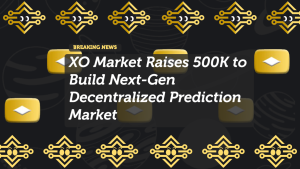
Ethereum Updates: ETFs, Verge Upgrade, and Competition in October 2024
October 2024 is a month of significant developments for Ethereum as the network continues to evolve and adapt to market demands. From new ETF offerings and technological upgrades to competitive challenges, Ethereum remains at the center of the cryptocurrency ecosystem. In this article, we’ll explore the latest updates, their implications, and how Ethereum is positioning itself for the future.
1. Ethereum ETF Developments: Global Expansion Meets Investor Caution
The introduction of Ethereum-based Exchange Traded Funds (ETFs) marks a crucial milestone for the asset. Following the launch of Australia’s first Ethereum ETF in October, retail investors in the region can now gain direct exposure to Ethereum without needing to purchase and store the digital asset themselves. This development mirrors the trend in Bitcoin ETFs, aiming to attract traditional investors to the cryptocurrency market.
1.1 The U.S. Market and Investor Sentiment
While global interest in Ethereum ETFs grows, U.S.-based ETFs like Fidelity’s Ethereum ETF have seen notable outflows recently. This trend may indicate investor caution amidst broader market volatility, potentially signaling that some investors are still hesitant to fully embrace Ethereum-based products in the current climate. These outflows reflect concerns over regulatory uncertainty and market dynamics, even as institutional interest continues to rise.
1.2 ETF Adoption and Long-Term Potential
ETF products are designed to make cryptocurrencies like Ethereum more accessible to traditional investors, bridging the gap between digital assets and mainstream financial markets. As more regions introduce these investment vehicles, Ethereum could benefit from increased liquidity and greater institutional participation. However, the mixed reception in different markets highlights the importance of regulatory clarity and the role of macroeconomic factors in shaping investor sentiment.
2. Technological Upgrades: The Verge and Etherscan v2 API Beta
Ethereum’s development team continues to innovate, with upcoming upgrades aimed at enhancing the network’s accessibility and usability. Two notable updates this October include the anticipated Verge upgrade and the release of Etherscan’s v2 API beta.
2.1 The Verge Upgrade: Making Ethereum More Accessible
The Verge upgrade is part of Ethereum’s ongoing technical roadmap and is expected to enable nodes to run on lower-cost hardware, including smartphones and smartwatches. This shift aims to make Ethereum’s network more decentralized and accessible, allowing more users to participate in the network without investing in expensive, specialized equipment.
By lowering the hardware requirements for running an Ethereum node, the Verge upgrade could strengthen the network’s resilience and make it more inclusive, aligning with Ethereum’s long-term goals of decentralization. If successful, the Verge upgrade could further bolster Ethereum’s standing as the most widely adopted smart contract platform by reducing barriers to entry for developers and users alike.
2.2 Etherscan’s v2 API Beta: Enhanced Developer Experience
Ethereum’s leading blockchain explorer, Etherscan, launched its v2 API in beta this October, a significant improvement aimed at unifying data across over 50 EVM-compatible chains. This upgrade is intended to simplify access for developers, providing a more efficient way to work with data from multiple Ethereum-compatible networks.
For developers, the new Etherscan API will streamline the process of accessing data, improving the overall developer experience and promoting innovation within the Ethereum ecosystem. By supporting cross-chain functionality, Etherscan’s v2 API also acknowledges the growing importance of interoperability in the blockchain space, allowing Ethereum to stay competitive with multi-chain platforms.
3. Market and Competitive Dynamics: Ethereum’s Position Against Rivals
Despite Ethereum’s technological advancements, the network faces significant competition from other blockchains, most notably Solana. Ethereum’s market price has shown relative weakness compared to Bitcoin, with analysts predicting that Ethereum’s next major rally may be deferred until 2025. Meanwhile, Solana’s increasing transaction volumes and fee revenues highlight its growing influence in the decentralized finance (DeFi) space.
3.1 Solana’s Increasing Market Share
Solana’s fast and low-cost transactions have positioned it as a strong competitor to Ethereum, particularly for DeFi applications and NFTs. As Solana’s transaction volume and fee revenues climb, it underscores the platform’s ability to attract developers and users who might otherwise be deterred by Ethereum’s higher gas fees.
While Ethereum’s move toward Layer 2 solutions aims to address scalability issues, Solana’s high-speed architecture and low fees continue to pose a challenge. Ethereum’s ecosystem remains robust, but with new platforms gaining traction, the network must continue to innovate to retain its position as the dominant smart contract platform.
3.2 Ethereum’s Strategic Advantage: A Developer-Driven Ecosystem
Ethereum still holds a strategic advantage in its developer community and the breadth of projects built on its network. With a vast array of decentralized applications, Ethereum remains the first choice for developers looking to build complex, secure dApps. The recent upgrades, including Etherscan’s API improvements and the Verge update, reflect Ethereum’s commitment to enhancing the developer experience and making its infrastructure more robust.
However, the market competition is intense. Platforms like Polygon are gaining traction through sidechains and Layer 2 solutions that offer Ethereum compatibility with lower fees. Ethereum’s ability to innovate and adapt to competitive pressures will be critical as it faces an increasingly crowded field.
4. The Road Ahead for Ethereum: Opportunities and Challenges
Ethereum’s October 2024 developments demonstrate the platform’s commitment to long-term growth and adaptation. With advancements like the Verge upgrade, Etherscan API improvements, and global ETF adoption, Ethereum is clearly positioning itself for wider adoption and greater decentralization. However, challenges remain, especially from competitive platforms like Solana and Polygon that offer faster, cheaper alternatives.
4.1 Potential Market Impact of the Verge Upgrade
If the Verge upgrade is successful, Ethereum could see an influx of new node operators and developers, strengthening its decentralized infrastructure. By making it easier for users to participate in the network without specialized hardware, Ethereum can enhance its security and resilience, potentially driving increased adoption over the next few years.
4.2 ETF Adoption and Institutional Interest
With ETF products gradually gaining traction in multiple regions, Ethereum has an opportunity to draw more institutional interest. However, the recent outflows from U.S.-based ETFs indicate that market sentiment remains mixed, and continued volatility in the crypto market could impact investor confidence.
4.3 Competitive Pressure from Layer 1 and Layer 2 Solutions
Ethereum’s continued dominance will depend on its ability to maintain relevance in the face of increasing competition. While Ethereum’s Layer 2 solutions are designed to reduce gas fees, rivals like Solana and Binance Smart Chain already offer low-cost alternatives. Ethereum’s challenge will be to balance innovation with scalability, ensuring that it meets the demands of an expanding user base without compromising on decentralization.
Conclusion: Ethereum’s Path Forward in a Dynamic Crypto Ecosystem
Ethereum remains a dynamic force in the crypto space, continuously evolving through technological upgrades, expanding into new markets via ETFs, and addressing competitive pressures. October 2024 marks a pivotal time, with advancements like the Verge upgrade and Etherscan’s new API aimed at making the network more accessible and efficient.
However, Ethereum’s journey is far from straightforward. Competition from Solana, Polygon, and other emerging platforms poses ongoing challenges, while market conditions and investor sentiment continue to fluctuate. As Ethereum navigates this complex landscape, its focus on scalability, decentralization, and accessibility will be essential in maintaining its position as the leading smart contract platform.
For investors and developers alike, Ethereum’s developments offer a blend of opportunity and caution, with new upgrades promising a more robust network while market dynamics underscore the need for strategic foresight.
















